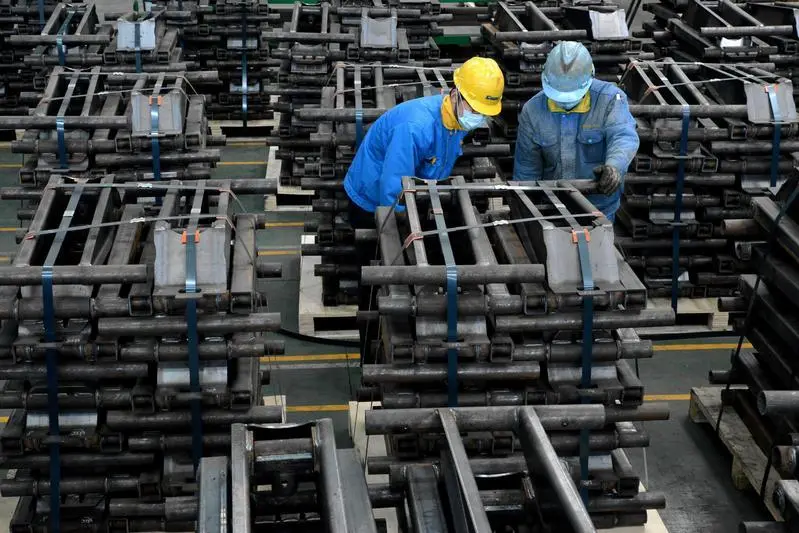PHOTO
LAUNCESTON, Australia- Is the spectacular rebound in China's manufacturing index a hopeful template for the rest of the world once the coronavirus pandemic is contained, or another volatility-affected number best treated with caution
The official manufacturing Purchasing Managers' Index (PMI) leapt to 52 in March from the record low 35.7 in February, vaulting over the 50-mark that separates expansion from contraction.
But before getting carried away by the robust recovery in the index, it's worth noting that the PMI is a month-by-month indicator, meaning March's strong performance is relative to February's dire outcome.
This means the rebound is largely because of the low base in February, and as such the PMI isn't a sign that the Chinese economy has recovered and is now back in growth mode.
Nonetheless, the PMI does give some cause for optimism that China may be experiencing something of the hoped-for V-shaped economic recovery.
In this scenario, the economic hit from effectively shutting down much of the economy in order to contain the spread of the coronavirus is followed by a rapid rebound in activity as companies resume operations.
For the V-shaped recovery to be confirmed, it will take more than one month's PMI, especially since China, having largely recovered from the coronavirus outbreak that started in the city of Wuhan, now faces weakness in its key export markets as the rest of the world struggles to contain the disease.
The economic devastation currently being inflicted across Europe, North America and elsewhere will put China's economic recovery at risk, as well as increase the possibility of a second-wave of coronavirus in China, if infected citizens return home.
It's also likely that China's experience won't be mirrored across the globe, with developed nations likely to experience a longer economic downturn from the coronavirus, given they were slow to lock down and containing the epidemic is likely to take longer than it did in China.
An example of the relatively short tenure of the economic hit in China is the relatively strong performance of its imports of major commodities during the outbreak.
RESILIENT COMMODITIES
While official data for March will be released next week, Refinitiv Oil Research estimates China imported 10.55 million barrels per day (bpd) for the month, well above the coronavirus-impacted 9.98 million bpd in February.
March's imports will still have been impacted by the epidemic, with travel restrictions still in place for much of the month in Hubei province, whose capital is Wuhan.
Official data for the first two months of the year showed China's crude imports at 10.47 million bpd, meaning that March may see a small acceleration.
April crude imports are likely to be higher still as Chinese refiners take advantage of the crash in crude prices and Saudi Arabia's decision to boost exports in the wake of the breakdown of the output restriction deal between the Organization of the Petroleum Exporting Countries (OPEC) and its allies, including Russia.
What the crude import numbers show is that the impact on China's demand from the coronavirus was muted, despite reports that oil consumption had dropped by as much as 4 million bpd in February.
It's likely China kept importing crude for stockpiling purposes, a process likely to continue for the coming months given the slump in oil prices.
But the rest of the world is unlikely to do this, meaning crude demand outside of China will take a major hit, with some estimates reaching as high as 26 million bpd currently.
China's imports of iron ore and coal have also held up well through the first quarter, with Refinitiv ship-tracking data estimating iron imports in March as high as around 90 million tonnes, and coal at around 25 million to 26 million tonnes.
If the final outcome is in line with these estimates, it would mean China's iron ore and coal imports strengthened in March from February.
The strength in commodity imports give some fundamental backing to the March PMI number, and to the view that China is recovering fairly quickly from the coronavirus.
But China is now at risk from the rest of the world tipping into a severe recession, although the hope is the developed world can still pull off a V-shaped recovery of its own through the unprecedented fiscal stimulus being rolled out in many countries.
(Editing by Christian Schmollinger) ((clyde.russell@thomsonreuters.com)(+61 437 622 448)(Reuters Messaging: clyde.russell.thomsonreuters.com@reuters.net))












